John Atkinson Grimshaw (1836 – 1893) was an English painter known mostly for his moonlit nocturne paintings. As James McNeill Whistler once said:
“I considered myself the inventor of nocturnes until I saw Grimmy’s moonlit pictures”.
In this post, you will learn more about his life and paintings. Just be mindful that he did not keep records, documents or journals other than paintings, so the information about his life is limited. I cover:

Key Facts
- He was born on 6 September 1836 in West Yorkshire, England.
- His signature changed from “JAG” to “J. A. Grimshaw” to “John Atkinson Grimshaw” after finally settling on “Atkinson Grimshaw”. I remember when I started painting, always being frustrated with my signature. I changed many times until I settled on the simple “D. Scott”.
- In 1856, he married his first cousin, Frances Hubbard.
- At the age of 24 in 1861, he resigned from his job as a clerk for the Great Northern Railway to become a fine artist. His parents did not approve of this path he chose, but looking back now, it seems he made the right decision.
- Despite being self-taught, he developed his skills rather quickly. He had his first exhibition in 1862 which featured mostly delicate still lifes like the one below.

- He gradually built a name for himself as an artist and was relatively successful by the 1870s; enough to afford renting a 17th-century mansion in Scarborough. He referred to it as Castle by the Sea, named after a poem by Henry Longfellow. Here is an extract from that poem that describes the location:
‘Hast thou seen that lordly castle,
That Castle by the Sea?
Golden and red above it
The clouds float gorgeously.‘And fain it would stoop downward
To the mirrored wave below;
And fain it would soar upward
In the evening’s crimson glow.’‘Well have I seen that castle,
That Castle by the Sea,
And the moon above it standing,
And the mist rise solemnly.’‘The winds and the waves of ocean,
Had they a merry chime?
Didst thou hear, from those lofty chambers,
The harp and the minstrel’s rhyme?’
- The marine life at Castle by the Sea inspired some of Grimshaw’s best work, with many of his paintings from this time featuring ships, docks and sea, often under the soft moonlight of night.
- I have read that he lost three of his children before he moved to Castle by the Sea, but I have not been able to find any more information on this.
- He apparently went through some financial struggles around 1880 for unknown reasons.
- Toward the end of his art career, he started experimenting with different subjects and styles, even depicting fairies from time to time.
- He passed away from an illness in 1893.

A Closer Look at Some of Grimshaw’s Paintings
This is certainly my favorite painting by Grimshaw. In fact, the reason I wrote this post in the first place is because one of my readers sent me a photo of this painting, bringing Grimshaw’s work to my attention. The painting is named perfectly – Autumn Morning.
The rich yellow sky really jumps out from the canvas. Grimshaw’s attention to detail is also worth noting, especially for a self-taught artist. The building and the distant trees are tinted, which pushes them back in perspective.
Remember, as something recedes into the distance, it tends to take on the appearance of the surrounding atmosphere (known as atmospheric perspective). In this case, objects get lighter and closer to yellow.

Below is one of Grimshaw’s typical paintings; a street-lit urban scene with ambient moonlight in the background. In the sky, there is a beautiful and smooth gradation in color. It is interesting that Grimshaw used green for the moonlight, but it seems to work. There is a pleasing contrast between the green moonlight and the warm street lights around the bottom right.

There is hardly any hue contrast in the painting below; it is basically a monochrome painting done with different shades of yellow. Grimshaw relied almost entirely on value contrast, from the strong light of the moon to the dark silhouettes of the boats and figures. Also, notice how the silhouettes get progressively lighter as they recede into the distance. This helps create depth in the painting.

The name of this painting, lovers is important to note. Without knowing the name, you might overlook the tight embrace of two lovers in the quiet street. As with many of Grimshaw’s paintings, he used a rich yellow to depict light which is hitting the path. It looks like he used a scumbling technique to drag yellow paint over a dark underpainting.

Below is one of Grimshaw’s sunlit paintings, featuring a lady in a colorful garden. Notice how less gray is used and the increased level of clarity compared to the other paintings in this post.
The painting appears to have been created whilst Grimshaw was living at the Castle by the Sea between 1876 to 1879, so one might assume that the building in this painting is based on the Castle by the Sea. But I am just speculating.
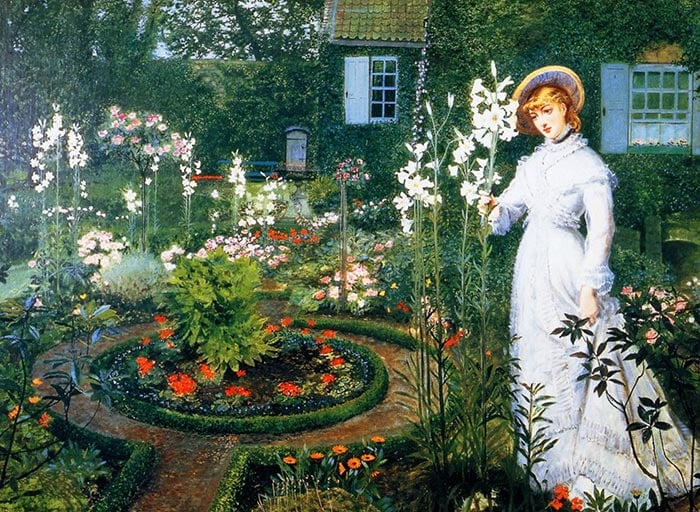
What is interesting about the painting below is the tilted-up vantage point. This draws attention to the dramatic sky. Notice the contrast between the organic shapes in the sky and the rigid, geometric shapes used for the buildings, road, cart, etc. The dark figures also provide interesting points of sharp value contrast around the painting.

Want to Learn More?
You might be interested in my Painting Academy course. I’ll walk you through the time-tested fundamentals of painting. It’s perfect for absolute beginner to intermediate painters.
Thanks for Reading!
I appreciate you taking the time to read this post and I hope you found it helpful. Feel free to share it with friends.
Happy painting!
Dan Scott

Draw Paint Academy

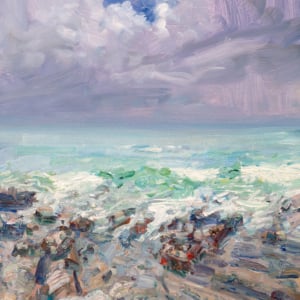
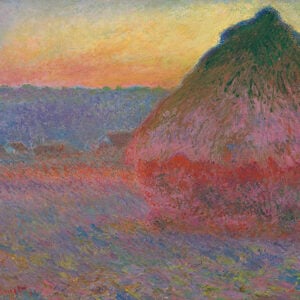
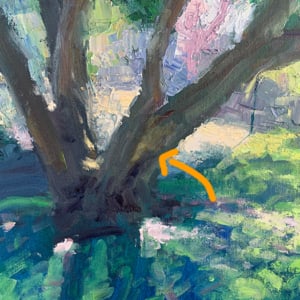
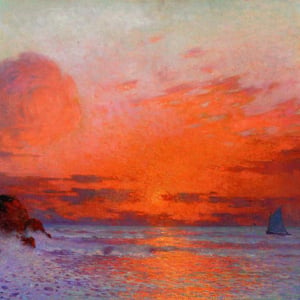
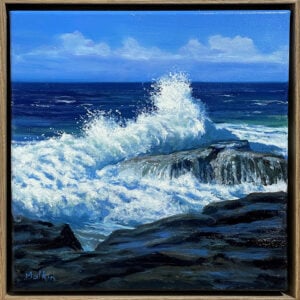
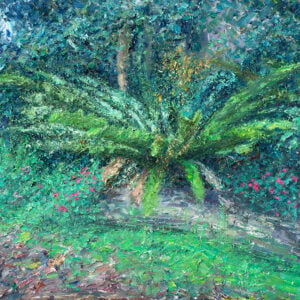
Another new artist for me….so enjoying these emails.
Many thanks always inspiring
Shirley
I agree!
Wow… his works look like photos .. amazing detail.
Thank you for sharing about this artist.. I hadn’t heard of him.
Great report Don!
Dan,
Another fine post, I love the insights about these great artists. These tips give me more insights and direction when I’m painting, thanks again. Was Thomas Kinkaid inspired by this artist mastery of the light?
J Rankin
A painter who seems to share the same spirit (Modest Urgell, 1839-1919): https://www.google.com/search?q=modest+urgell&rlz=1C5CHFA_enES548ES550&source=lnms&tbm=isch&sa=X&ved=0ahUKEwjFq4HX7KniAhWkxoUKHXWADDIQ_AUIDigB&biw=1681&bih=1080
I love your posts, introducing painters that I would otherwise never have known. Such an inspiring way to start or end the day- viewing their works and learning from your perspective. Thank you.
Never heard about this artist, love his paintings,
they are absolutely beautiful! Wish I could paint like this….
I agree with the other comments. I had never heard of this artist but love his paintings! Thank you Dan for sharing this information. I enjoy your posts and thank you for the time you put into them.
Thank you for your informative emails.
So inspiring!
Eva
The Spirit of the Night painting is amazing!!!
Just love your emails. The introduction to artists who are new to me is particularly pleasing. Thank you so much.
Thank you so much! Grimshaw’s paintings are so beautiful!
Thank you, I appreciate your sharing your talent, it’s all new to me& very encouraging.
THAT’s the way I want to paint!!!! Such feeling! Such depth in each picture! Thank you for bringing Grimshaw to light! I want to learn more and more about him!
Your article on Grimshaw was perfect timing. We were working on night skies.
I also am working on night scenes at the moment and finding it a challenge but loving it. Thank you for your interesting and informative posts
You are doing such a GREAT job…. enjoy all of you posts.
Thanks
Thank you for this Dan! I always enjoy receiving your emails, finding them most informative, and encouraging. As an artist myself, there is always something to learn from the masters, and you lovingly provide many lessons.
I encourage you to keep them coming.
Regards, and Blessings,
Jacqueline. (Jaqui artist)
Hi Dan,
Thanks again for some beautiful works. As you, I have had a hard time figuring out how to sign my paintings. I am just signing “bEv” It works for me.
You have shown me some beautiful paintings from very talented artists. I really thank you, for without your input into my life, I never would have come across these wonders.
And for me, it is now ok, that I don’t paint like everybody else. I have a friend whose Mom paints beautiful landscapes, portraits, etc, but she cannot paint a sea turtle as good as I can. hahaha made me laugh for a long time and feel better.
Thanks Dan
Bev Mac Phee
So glad that you’re featuring Grimshaw. I only discovered him a couple of years ago. One of his pictures is of an abandoned mill and his handling of the woodland surrounding the subject is magnificent!
Thanks for your posts. Learning lots from them about different artists. But mainly like how you point out and explain the techniques used to get different effects. This really benefits my own development. Keep them coming.
Another top post Dan, loved the evening scenes, not so much the garden.
Don’t get me wrong, if I could paint a garden like that I would be cock- a-hoop !!
A bit of everything in this post, fine art , poetry, so what’s next ??
Keep ’em coming, great stuff.
Thanks, Dave M ( Australia)???
Thank you for all you point out! So helpful and interesting. I love that he was self taught and dared to see it and live it as something he was born to do??
What a fine selection of varied paintings of a Master. It was a treat, thank you!
Marvelous post. Thank you so much for sharing. Pity more isn’t known about him.
I agree with Peggy! Your posts are always great. Pointing out the techniques used shows us how many different styles and methods there are within oil painting!! Thank you Dan.
amazing article.. the magical strokes..to define the night and light, both.
Enjoyed this post very much, Dan! I learn a lot from the way you relate the lessons we can learn from studying master artists’ works. Thank you for sharing these art principles with us.
Thank you for your emails that introduce us to artists and their work that otherwise we would never find. (There are only so many hours in ra day) You intersperse impressionists and detail painters and I guess you have to decide where your talent lies. We are often advised to use bigger brushes and Ron Ransom will show you how to achieve both. He uses 3 brushes only, starting with 2″. but impressionists have no room for small brushes. I guess only trial and error will sort it out. Ray
Great read, thank you again.
Thank you! One never stops learning….even at my age…. 85! This what makes life worth
living.
so fantastic.want to know more about this artist